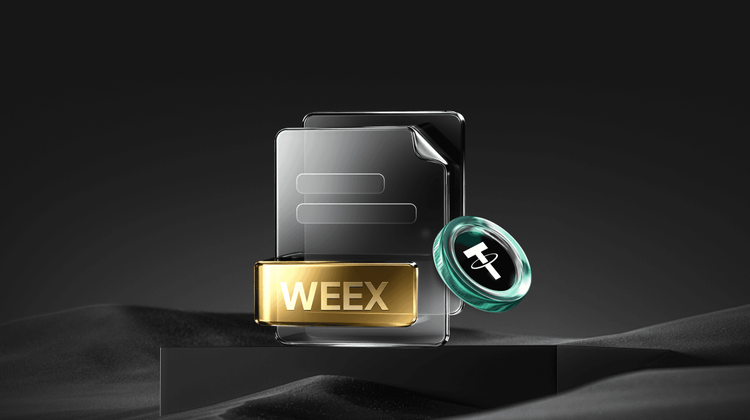Brevis Research Paper: ZKVM and Data Co-Processor - The Infinite Trustworthy Computing Layer
Original Article Title: "Brevis Report: ZKVM and Data Coprocessor's Endless Verifiable Computing Layer"
Original Article Author: 0xjacobzhao
The "Off-chain Computation + On-chain Verification" paradigm of Verifiable Computing has become a universal computing model in blockchain systems. It enables blockchain applications to achieve nearly unlimited computational freedom while maintaining decentralization and trustlessness security. Zero-Knowledge Proof (ZKP) is the core pillar of this paradigm, with its applications primarily focused on scalability, privacy, as well as interoperability and data integrity. Among them, scalability was the first scenario where ZK technology was implemented, achieving high TPS and low-cost trustworthy scalability by moving transaction execution off-chain and verifying the results on-chain with concise proofs.

The evolution of ZK Verifiable Computing can be summarized as L2 zkRollup → zkVM → zkCoprocessor → L1 zkEVM. In the early days, L2 zkRollup moved execution to Layer 2 and submitted a Validity Proof at Layer 1 with minimal changes to achieve high throughput and low-cost scalability. zkVM subsequently evolved into a general-purpose verifiable computing layer, supporting cross-chain validation, AI inference, and cryptographic computing (representative projects: Risc Zero, Succinct, Brevis Pico). zkCoprocessor developed in parallel, serving as a scenario-specific verification module, providing plug-and-play computing and proof services for DeFi, RWA, risk control, etc. (representative projects: Brevis, Axiom). In 2025, zkEVM expanded the concept to L1 Realtime Proving (RTP), constructing a verifiable circuit at the EVM instruction level, allowing zero-knowledge proofs to be directly integrated into the Ethereum mainnet execution and verification process, becoming a native verifiable execution mechanism. This evolution reflects the technological transition of blockchain from "scalable" to "verifiable," ushering in a new era of verifiable computing.
1. Ethereum zkEVM Scaling Journey: From L2 Rollup to L1 Real-time Proof
The Ethereum zkEVM scaling path goes through two stages:
· Stage One (2022–2024): L2 zkRollup moves execution to Layer 2, with on-chain submission of validity proofs; significantly reduces costs and increases throughput, but introduces liquidity and state fragmentation, with L1 still constrained by N-of-N reexecution.
· Stage Two (2025–): L1 Real-time Proof (RTP) replaces reexecution with "1-of-N proof + network-wide lightweight verification," increasing throughput without sacrificing decentralization, still evolving.
L2 zkRollup Stage: Balancing Compatibility and Scalability
In 2022, during the flourishing of the Layer 2 ecosystem, Ethereum co-founder Vitalik Buterin proposed the ZK-EVM four-type classification (Type 1–4), systematically revealing the structural trade-off between compatibility and performance. This framework established a clear roadmap for the subsequent zkRollup technologies:

· Type 1 Full Equivalence: Consistent with Ethereum bytecode, lowest migration cost, slowest proof. Taiko.
· Type 2 Full Compatibility: Very few low-level optimizations, highest compatibility. Scroll, Linea.
· Type 2.5 Semi-compatibility: Slight modifications (gas/precompiles, etc.) in exchange for performance. Polygon zkEVM, Kakarot.
· Type 3 Partial Compatibility: Larger changes, can run most applications but difficult to fully reuse L1 infrastructure. zkSync Era.
· Type 4 Language-based: Abandoning bytecode compatibility, compiling directly from high-level language to circuits, optimal performance but requires rebuilding the ecosystem (represented by StarkNet / Cairo).
The current L2 zkRollup model has matured: by moving execution to layer 2, submitting a Validity Proof on layer 1 with minimal changes to the Ethereum ecosystem and tooling, it has become a mainstream scaling and cost-reduction solution. The proof encompasses L2 block and state transitions, while settlement and security remain anchored to L1. This architecture significantly enhances throughput and efficiency, maintaining high compatibility with developers, but also introduces liquidity and state fragmentation, and L1 is still constrained by an N-of-N re-execution bottleneck.
L1 zkEVM: Realtime Proof Reshaping Ethereum's Light Verification Logic
In July 2025, the Ethereum Foundation published the article "Shipping an L1 zkEVM #1: Realtime Proving," formally introducing the L1 zkEVM roadmap. L1 zkEVM upgrades Ethereum from N-of-N re-execution to 1-of-N proof + network-wide fast verification: where a few provers generate a short proof for the entire EVM state transition, and all validators only perform constant-time verification. This scheme achieves L1-level Realtime Proving without sacrificing decentralization, enhances security, increases the mainnet's Gas limit and throughput, and significantly reduces node hardware requirements. The implementation plan involves replacing traditional execution clients with zk clients, running them in parallel initially, and gradually becoming the new normal at the protocol layer as performance, security, and incentive mechanisms mature.

· N of N Old Paradigm: All validators re-execute the entire block of transactions for validation, which is secure but limits throughput and incurs high peak fees.
· 1 of N New Paradigm: A few provers execute the entire block and produce a short proof; the entire network only performs constant-time verification. The cost of verification is much lower than re-execution, enabling a safe increase in L1 gas limit and reducing hardware requirements.
L1 zkEVM Roadmap Three Main Threads
1. Real-time Proving: Complete whole block proof within 12-second slot time, reduce latency through parallelization and hardware-accelerated compression;
2. Client and Protocol Integration: Standardize proof verification interface, opt-in first, default later;
3. Incentives and Security: Establish Prover marketplace and fee model, strengthen resistance to censorship and network activity.
Ethereum L1 Real-time Proving (RTP) uses zkVM to re-execute whole block transactions off-chain and generate a cryptographic proof, enabling validators to verify a small proof in 10 seconds without re-computation, achieving "Validate instead of Execute," significantly improving Ethereum's scalability and trustless validation efficiency. According to the Ethereum Foundation's official zkEVM Tracker page, the main teams participating in the L1 zkEVM Real-time Proving roadmap include SP1 Turbo (Succinct Labs), Pico (Brevis), Risc Zero, ZisK, Airbender (zkSync), OpenVM (Axiom), and Jolt (a16z).
II. Beyond Ethereum: Generalized zkVM and zkCoprocessor
Outside the Ethereum ecosystem, zero-knowledge proof (ZKP) technology has also extended to the broader field of Verifiable Computing, forming two core technology systems centered around zkVM and zkCoprocessor.
zkVM: Generalized Verifiable Computing Layer
An arbitrary program's verifiable execution engine, common instruction set architectures include RISC-V, MIPS, and WASM. Developers can compile business logic to zkVM, executed off-chain by a prover to generate zero-knowledge proofs (ZKP) verifiable on-chain, suitable for Ethereum L1 block proof and scenarios such as cross-chain validation, AI inference, encrypted computation, and complex algorithms. Its advantages are generality and broad applicability, but with complex circuits, high proof costs, requiring multiple GPU parallelization and intense engineering optimization. Representative projects include Risc Zero, Succinct SP1, Brevis Pico / Prism.
zkCoprocessor: Scenario-based Verifiable Module
Provides "plug-and-play" computing and proving services tailored to specific business scenarios. The platform preloads data access and circuit logic (such as historical on-chain data retrieval, TVL, earnings settlement, identity verification, etc.), and applications can obtain computation results and on-chain proof consumption through an SDK/API call. This mode is quick to start, high-performing, and cost-effective, but has limited applicability. Typical projects include Brevis zkCoprocessor, Axiom, etc.
Overall, both zkVM and zkCoprocessor follow the trusted computing paradigm of "off-chain computation + on-chain verification", utilizing zero-knowledge proofs to validate off-chain results on-chain. The economic logic is based on the premise that the cost of on-chain execution is much higher than the combined cost of off-chain proof generation and on-chain verification.
In terms of applicability and engineering complexity, the key difference between the two lies in:
zkVM is a general-purpose computing infrastructure suitable for complex, cross-domain, or AI scenarios, providing the highest flexibility;
zkCoprocessor is a modularized verification service that offers low-cost, directly callable verification interfaces for high-frequency reusable scenarios (DeFi, RWA, risk control, etc.).
In terms of business models, the difference between zkVM and zkCoprocessor is as follows:
zkVM adopts the Proving-as-a-Service model, charging per proof (ZKP), mainly targeting L2 Rollup and other infrastructure customers. It is characterized by large contract sizes, long cycles, and stable gross margins;
zkCoprocessor mainly offers Proof API-as-a-Service, charging per task through API calls or SDK integration, closer to a SaaS model, targeting application layer protocols like DeFi, with quick integration and strong scalability.
Overall, zkVM is the underlying engine for verifiable computing, and zkCoprocessor is the application-layer verification module: the former builds a technological moat, while the latter drives commercialization and together form a universal trusted computing network.

III. Brevis Product Landscape and Technology Roadmap
Starting from Ethereum's L1 Realtime Proving, ZK technology is gradually moving towards an era of universal zkVM and zkCoprocessor core-based verifiable computation. The Brevis Network is a fusion of zkVM and zkCoprocessor, building a universal verifiable computing infrastructure core to zero-knowledge computation, combining high performance and programmability—an Infinite Compute Layer for Everything.
3.1 Pico zkVM: Modular Proof Architecture for Universal Verifiable Computing
In 2024, Vitalik proposed the "universal execution layer + coprocessor acceleration layer" architecture in "Glue and Coprocessor Architectures." Complex computations can be divided into generic business logic and structured intensive computation—the former pursues flexibility (e.g., EVM, Python, RISC-V), the latter pursues efficiency (e.g., GPU, ASIC, hash module). This architecture is becoming a common trend in blockchain, AI, and encrypted computing: EVM accelerates through precompiles, AI leverages GPU parallelism, and ZK proofs combine a universal VM with dedicated circuits. The future key is to optimize security and development experience through the "glue layer," while the "coprocessor layer" focuses on efficient execution, striking a balance between performance, security, and openness.

Pico zkVM developed by Brevis is a representative implementation of this concept. Through the "universal zkVM + coprocessor acceleration" architecture, it combines flexible programmability with high-performance specialized circuits. Its modular design supports various proof backends (KoalaBear, BabyBear, Mersenne31) and allows for free combination of execution, recursion, compression, and other components to form a ProverChain.
The modular architecture of Pico allows not only the free reorganization of core components, but also the introduction of new proving backends and application-level coprocessors (such as on-chain data, zkML, cross-chain validation), achieving continuous evolution scalability. Developers can directly use the Rust toolchain to write business logic, automatically generate cryptographic proofs without zero-knowledge background, significantly reducing the development threshold.
Compared to the relatively monolithic RISC-V zkVM architecture of Succinct SP1 and the general-purpose RISC-V execution model of RISC Zero R0VM, Pico achieves decoupling and extension of the execution, recursion, and compression stages through the Modular zkVM + Coprocessor System, supporting multiple backend switches and coprocessor integrations, forming a differentiated advantage in performance and scalability.

3.2 Pico Prism: Performance Breakthrough of Multi-GPU Cluster
Pico Prism is Brevis's significant breakthrough on a multi-server GPU architecture and has set a new record under the Ethereum Foundation's "Real-Time Proving (RTP)" framework. Achieving an average proof time of 6.9 seconds and 96.8% RTP coverage on a 64×5090 GPU cluster, the performance ranks at the forefront of similar zkVM implementations. This system is optimized at the architecture, engineering, hardware, and system levels, marking the transition of zkVM from a research prototype to a production-grade infrastructure.
1. Architecture Design: Traditional zkVMs (such as SP1, R0VM) mainly rely on single-machine GPU optimization. Pico Prism achieves parallel proving across multiple servers and GPUs for the first time (Cluster-Level zkProving), expanding zk proofs into a distributed computing system through multithreading and sharding, significantly increasing parallelism and scalability.
2. Engineering Implementation: Building a multi-stage asynchronous pipeline (Execution / Recursion / Compression) and a cross-layer data reuse mechanism (proof chunk caching and embedding reuse), and supporting multiple backend switches (KoalaBear, BabyBear, M31), significantly improving throughput efficiency.
3. Hardware Strategy: With a 64×RTX 5090 GPU configuration (approximately $128K), Pico Prism achieves an average proof time of 6.0–6.9 seconds, 96.8% RTP coverage, and a performance/cost ratio improvement of around 3.4x. This outperforms the SP1 Hypercube (160×4090 GPU, 10.3 seconds).
4. System Evolution: As the first zkVM to meet the Ethereum Foundation's RTP metrics (>96% sub-10s, <$100K cost), Pico Prism marks the transition of zk proof systems from research prototypes to production-grade infrastructure, providing a more cost-effective zero-knowledge computational solution for Rollup, DeFi, AI, and cross-chain validation scenarios.
3.3 ZK Data Coprocessor: Blockchain Data Smart Zero-Knowledge Coprocessing Layer
Native smart contract design lacks "memory" – the ability to access historical data, identify long-term behavior, or conduct cross-chain analysis. Brevis offers a high-performance Zero-Knowledge Coprocessor (ZK Coprocessor) to provide smart contracts with cross-chain historical data access and trusted computing capabilities to verify and compute the entire blockchain's historical state, transactions, and events, applied in data-driven DeFi, active liquidity management, user incentives, and cross-chain identity recognition scenarios.
Brevis's workflow consists of three steps:
1. Data Access: Smart contracts read historical data trustlessly via an API;
2. Computation Execution: Developers define business logic using an SDK, computed off-chain by Brevis to generate a ZK proof;
3. Result Verification: The proof result is sent back on-chain for contract verification and subsequent logic invocation.

Brevis also supports Pure-ZK and CoChain (OP) models: the former achieves minimal trust but at a higher cost; the latter, through PoS validation and ZK challenge mechanisms, allows for lower-cost verifiable computation. Validators stake on Ethereum and face slashing if their results are successfully challenged via ZK proof, striking a balance between security and efficiency. By integrating the ZK + PoS + SDK architecture, Brevis finds a balance between security and efficiency, constructing a scalable trusted data computation layer. Currently, Brevis has served protocols like PancakeSwap, Euler, Usual, Linea, among others, all zkCoprocessor collaborations based on the Pure-ZK model, providing trusted data support for DeFi, reward distribution, and on-chain identity systems, enabling smart contracts to truly have both "memory and intelligence."
3.4 Incentra: ZK-Based 'Verifiable Incentive Distribution Layer'
Incentra is a trust-driven incentive distribution platform powered by Brevis zkCoprocessor, providing DeFi protocols with a secure, transparent, and verifiable reward calculation and distribution mechanism. It leverages zero-knowledge proofs to directly validate incentive outcomes on-chain, achieving trustlessness, low cost, and cross-chain incentive execution. The system conducts reward calculation and validation within a ZK circuit, ensuring that any user can independently verify the results. It also supports cross-chain operations and access control, enabling compliant, secure automated incentive distribution.
Incentra primarily supports three types of incentive models:
· Token Holding: Rewards long-term holders based on ERC-20 Time-Weighted Balances (TWA);
· Concentrated Liquidity: Allocates liquidity rewards based on AMM DEX fee ratios, compatible with ALM protocols such as Gamma and Beefy;
· Lend & Borrow: Calculates lending rewards based on the average of balances and debts.
This system has been applied in projects such as PancakeSwap, Euler, Usual, Linea, establishing a fully on-chain trusted loop from incentive calculation to distribution, providing DeFi protocols with a ZK-level verifiable incentive infrastructure.
3.5 Brevis Product Tech Stack Overview

4. Brevis zkVM Technical Metrics and Performance Breakthrough
The Ethereum Foundation (EF) proposed the L1 zkEVM Realtime Proving (RTP) standard, which has become an industry consensus and entry threshold for whether zkVM can enter the Ethereum mainnet validation route. Its core evaluation metrics include:
· Latency Requirement: P99 ≤ 10 seconds (matching Ethereum's 12-second block time);
· Hardware Constraints: CAPEX ≤ $100K, Power Consumption ≤ 10kW (Suitable for Home/Small Datacenter);
· Security Level: ≥128-bit (Transitional Period ≥100-bit);
· Proof Size: ≤300 KiB;
· System Requirements: Must not rely on trusted setups, Core code must be fully open-source.

In October 2025, Brevis released the report "Pico Prism—99.6% Real-Time Proving for 45M Gas Ethereum Blocks on Consumer Hardware," announcing that its Pico Prism became the first zkVM to fully comply with the Ethereum Foundation's (EF) Real-Time Proving (RTP) standard.
Operating on a 64×RTX 5090 GPU (approx. $128K), Pico Prism achieved performance in 45M gas blocks with average latency of 6.9 seconds, 96.8% <10s, 99.6% <12s, outperforming the Succinct SP1 Hypercube (36M gas, average of 10.3s, 40.9% <10s). With a 71% reduction in latency and a halving of hardware costs, the overall performance/cost efficiency improved by approximately 3.4×. This achievement has been publicly acknowledged by the Ethereum Foundation, Vitalik Buterin, and Justin Drake.

Five, Brevis Ecosystem Expansion and Application Implementation
Brevis's ZK Data Coprocessor (zkCoprocessor) is responsible for handling complex computations that dApps cannot efficiently perform (such as historical behavior, cross-chain data, aggregate analysis) and generates verifiable Zero-Knowledge Proofs (ZKPs). On-chain, only this small proof needs to be validated to securely invoke the result, significantly reducing Gas, latency, and trust costs. Compared to traditional oracles, Brevis provides not just the "result" but also the "mathematical guarantee of result correctness." Its main application scenarios can be categorized as follows:
· Intelligent DeFi: Achieving smart incentives and differentiated experiences based on historical behavior and market conditions (PancakeSwap, Uniswap, MetaMask, etc.)
· RWA & Stable Token Growth: Automating the allocation of stablecoin and RWA returns through ZK verification (OpenEden, Usual Money, MetaMask USD)
· DEX with Dark Pools: Implementing a privacy trading model with off-chain matching and on-chain validation, set to launch soon
· Cross-chain Interoperability: Supporting cross-chain re-staking and Rollup-L1 interoperability to build a shared security layer (Kernel, Celer, 0G)
· Blockchain Bootstrap: Empowering new blockchain ecosystem cold starts and growth through a ZK incentive mechanism (Linea, TAC)
· High-Performance Public Chains: Driving public chain performance improvements like Ethereum through Real-Time Proof (RTP) technology (Ethereum, BNB Chain)
· Verifiable AI: Integrating privacy-preserving and verifiable reasoning to provide trusted computational power for AgentFi and the data economy (Kaito, Trusta)

According to Brevis Explorer data, as of October 2025, the Brevis Network has cumulatively generated over 125 million ZK proofs, covering almost 95,000 addresses, and 96,000 application requests, extensively serving scenarios such as reward distribution, transaction verification, and staking proof. On the ecosystem level, the platform has distributed approximately 223 million USD in incentives, supporting a TVL exceeding 2.8 billion USD, with a cumulative transaction volume surpassing 1 billion USD.
The current focus of Brevis's ecosystem business is primarily on DeFi Incentive Distribution and Liquidity Optimization. The core computational power is contributed by four projects: Usual Money, PancakeSwap, Linea Ignition, Incentra, accounting for over 85% in total. Among them,
· Usual Money (46.6M proofs): Demonstrates its long-term stability in large-scale incentive distribution;
· PancakeSwap (20.6M): Showcases Brevis's high performance in real-time fee rate and discount calculation;
· Linea Ignition (20.4M): Validates its high concurrency processing capability in the L2 ecosystem activities;
· Incentra (15.2%): Marks Brevis's evolution from SDK tools to standardized incentive platforms.

In the DeFi Incentive Distribution field, Brevis relies on the Incentra platform to support multiple protocols in achieving transparent and continuous reward distribution:
· Usual Money with an annual incentive scale exceeding $300M, providing ongoing rewards for stablecoin users and LPs;
· OpenEden and Bedrock distribute US Treasury bond and Restaking returns based on the CPI model;
· Euler, Aave, BeraBorrow, and other protocols calculate lending positions and rewards through ZK verification.
In Liquidity Optimization, PancakeSwap, QuickSwap, THENA, Beefy utilize Brevis's dynamic fee rate and ALM incentive plugins to achieve transaction discounts and cross-chain yield aggregation; Jojo Exchange and Uniswap Foundation leverage ZK verification mechanisms to build a more secure transaction incentive system.
In the Cross-Chain and Infrastructure Layer, Brevis has expanded from Ethereum to BNB Chain, Linea, Kernel DAO, TAC, and 0G, providing trusted computation and cross-chain verification capabilities for the multi-chain ecosystem. Meanwhile, projects such as Trusta AI, Kaito AI, MetaMask are leveraging the ZK Data Coprocessor to build privacy-focused scoring systems for points, influence, and rewards, driving the development of Web3 data intelligence. At the system's core, Brevis relies on the EigenLayer AVS network to provide re-staking security guarantees, and combined with NEBRA Unified Proof Aggregator (UPA) technology, multiple ZK proofs are compressed into a single submission, significantly reducing on-chain verification costs and latency.
Overall, Brevis has covered the full-cycle application scenarios from long-term incentives, activity rewards, transaction validation to platformized services. Its high-frequency verification tasks and reusable circuit templates have provided real performance pressure and optimization feedback to Pico/Prism, promising to feed back into the L1 zkVM real-time proof system at the engineering and ecosystem levels, forming a two-way flywheel of technology and application.
Six, Team Background and Project Financing
Mo Dong | Co-founder, Brevis Network
Dr. Mo Dong is the Co-founder of Brevis Network, holding a Ph.D. in Computer Science from the University of Illinois at Urbana-Champaign (UIUC). His research achievements have been published in top international academic conferences, adopted by tech giants such as Google, and received thousands of academic citations. He is an expert in algorithmic game theory and protocol design, focusing on advancing the integration of Zero-Knowledge Proofs (ZK) and decentralized incentive mechanisms, dedicated to building a trusted Verifiable Compute Economy. As a risk partner at IOSG Ventures, he has also been actively involved in early-stage investments in Web3 infrastructure.
The Brevis team was founded by cryptography and computer science PhDs from UIUC, MIT, UC Berkeley, with core members having years of research experience in Zero-Knowledge Proof (ZKP) systems and distributed systems, and have published several peer-reviewed papers. Brevis has received technical recognition from the Ethereum Foundation, with its core module seen as critical on-chain scalability infrastructure.

In November 2024, Brevis completed a $7.5 million seed round led by Polychain Capital and Binance Labs, with participation from IOSG Ventures, Nomad Capital, HashKey, Bankless Ventures, and strategic angel investors from Kyber, Babylon, Uniswap, Arbitrum, AltLayer.
7. ZKVM and ZK Coprocessor Market Competitive Analysis
Currently, ETHProofs.org, supported by the Ethereum Foundation, has become the core tracking platform for L1 zkEVM Realtime Proving (RTP) route, used to publicly demonstrate each zkVM's performance, security, and mainnet adaptation progress.

Overall, the RTP track competition is focusing on four core dimensions:
· Maturity: SP1 has the most mature production deployment; Pico leads in performance and is close to the mainnet standard; RISC Zero is stable but RTP data is not public.
· Performance: Pico proof size is around 990 kB, about 33% smaller than SP1 (1.48 MB), with lower cost;
· Security and Audit: RISC Zero and SP1 have both passed independent security audits; Pico is currently in the audit process;
· Development Ecosystem: Mainstream zkVMs all adopt the RISC-V instruction set. SP1 relies on the Succinct Rollup SDK to form a widely integrated ecosystem. Pico supports Rust for automatic proof generation, and the SDK's completeness is rapidly improving.
From the latest data, the RTP track has now formed a "duopoly."
· First-tier players Brevis Pico (including Prism) and Succinct SP1 Hypercube both directly target the EF-defined standard of P99 ≤ 10s. The former achieves performance and cost breakthroughs through a distributed multi-GPU architecture, while the latter maintains engineering maturity and ecosystem robustness through a monolithic system. Pico represents performance and architectural innovation, while SP1 represents practicality and ecosystem leadership.
· Second-tier players RISC Zero, ZisK, ZKM continue to explore ecosystem compatibility and lightweighting but have not yet publicly disclosed complete RTP metrics (latency, power consumption, CAPEX, security posture, proof size, reproducibility). Scroll (Ceno) and Matter Labs (Airbender) are attempting to extend Rollup technology to the L1 validation layer, reflecting the evolutionary trend from L2 scaling to L1 verifiable computation.
By 2025, the zkVM track has formed a technological landscape characterized by RISC-V standardization, modular evolution, recursive standardization, hardware-accelerated parallelism. The zkVM's universal Verifiable Compute Layer can be divided into three categories:
· Performance-oriented: Brevis Pico, SP1, Jolt, ZisK focus on low latency and real-time proof, improving computation throughput through recursive STARK and GPU acceleration.
· Modular and Scalable: OpenVM, Pico, SP1 emphasize modular pluggability and support for coprocessor integration.
· Ecosystem and General Development-oriented: RISC Zero, SP1, ZisK focus on SDK and language compatibility, driving universalization.
zkVM Competing Projects Comparison (as of October 2025)

The current zk-Coprocessor track has taken shape with a landscape represented by Brevis, Axiom, Herodotus, Lagrange. Among them, Brevis leads in the "ZK Data Coprocessor + General zkVM" fusion architecture, incorporating historical data reading, programmable computation, and L1 RTP capability; Axiom focuses on verifiable queries and circuit callbacks; Herodotus specializes in historical state access; Lagrange optimizes cross-chain computation performance with a ZK+Optimistic hybrid architecture. Overall, zk-Coprocessor is evolving into a "verifiable service layer" and becoming a trusted computing interface connecting DeFi, RWA, AI, identity, and other applications.

8. Summary: Business Logic, Engineering Implementation, and Potential Risks
Business Logic: Performance-Driven with a Dual-Layer Flywheel
Brevis builds a multi-chain trusted computing layer with "General zkVM (Pico/Prism)" and "Data Coprocessor (zkCoprocessor)": the former addresses verifiable computation problems of any nature, while the latter drives business implementations of historical and cross-chain data.
Its growth logic follows a "Performance - Ecosystem - Cost" positive cycle: the RTP performance of Pico Prism attracts integration by top protocols, leading to scale growth in proofs and a decrease in unit costs, forming a continuously reinforced dual-layer flywheel. The competitive advantages mainly lie in three areas:
1. Reproducible Performance — Already part of the Ethereum Foundation's ETHProofs RTP system;
2. Architectural Barrier — Modular design and multi-GPU parallelism for high scalability;
3. Business Validation — Scaled in incentive distribution, dynamic fees, and cross-chain validation.
Engineering Implementation: From "Replay" to "Verify Instead of Execute"
Brevis achieves an average of 6.9 seconds per 45M gas block with Pico zkVM and the Prism parallel framework, with P99 < 10 seconds (64×5090 GPUs, <$130 K CAPEX), leading in both performance and cost efficiency. The zkCoprocessor module supports historical data retrieval, circuit generation, and backlink validation, and can flexibly switch between Pure-ZK and Hybrid modes. Overall performance is now closely aligned with Ethereum's RTP hard standard.
Potential Risks and Key Concerns
· Technical and Compliance Thresholds: Brevis still needs to achieve public and third-party validation of hard metrics such as completion time, security bound, proof size, and trusted setup dependence. Tail performance optimization remains crucial, and EIP adjustments may change performance bottlenecks.
· Competition and Substitute Risks: Succinct (SP1/Hypercube) still holds a lead in tooling and ecosystem integration, and the competitiveness of teams like Risc Zero, Axiom, OpenVM, Scroll, zkSync cannot be ignored.
· Revenue Concentration and Business Structure: Current proof volume is highly concentrated (top four applications account for about 80%), necessitating diversification through multi-industry, multi-blockchain, and multi-use case expansions to reduce dependence. GPU costs may impact unit margin.
Overall, Brevis has built preliminary moats on both "reproducible performance" and "business applicability" ends: Pico/Prism has solidified its position in the L1 RTP race's top tier, while zkCoprocessor has opened up high-frequency, reusable commercial scenarios. We recommend aiming to achieve the full set of Ethereum Foundation RTP hard metrics as a phased goal, continuously strengthening coprocessor product standardization and ecosystem expansion, and advancing third-party reproducibility, security audits, and cost transparency. By achieving a structural balance between infrastructure and SaaS revenue, a sustainable business growth loop can be established.
Disclaimer: This article was created with the assistance of ChatGPT-5 AI tools. The author has made every effort to proofread and ensure the information is true and accurate, but mistakes may still remain, for which your understanding is appreciated. It must be emphasized that the cryptocurrency market commonly exhibits a disconnect between project fundamentals and secondary market price performance. The content of this article is for information aggregation and academic/research purposes only, does not constitute any investment advice, and should not be considered as a recommendation for buying or selling any tokens.
This article is contributed content and does not represent the views of BlockBeats.
You may also like

Countdown to Midterm Elections: Will the US Crypto Bill Pass the Test?

2025 Crypto Rich List: 12 Big Winners, Who Bet on the Money Maker?

「Macro Master」 Raoul Pal on 30x Growth Under Indexation: Bitcoin Will Eventually Surpass Gold

Base App is now fully open! How was your experience?

Uniswap Pay Dispute Escalates, Maple Finance Loan volume Hits All-Time High, What's the Overseas Crypto Community Talking About Today?

Galaxy's 26 Predictions for Next Year: Bitcoin to Reach New ATH, Stablecoin Transaction Volume to Surpass ACH System

Blockchains Quietly Prepare for Quantum Threat as Bitcoin Debates Timeline
Key Takeaways: Several blockchains, including Ethereum, Solana, and Aptos, are actively preparing for the potential threat posed by…

Former SEC Counsel Explains What It Takes to Make RWAs Compliant
Key Takeaways The SEC’s shifting approach is aiding the growth of Real-World Assets (RWAs), but jurisdictional and yield…

Trend Research Quietly Becomes One of Ethereum’s Largest Whales with Major ETH Acquisition
Key Takeaways Trend Research has acquired 46,379 ETH, boosting their total holdings to about 580,000 ETH. The company,…

Aave’s $10M Token Purchase Raises Concerns Over Governance Power
Key Takeaways: Aave founder Stani Kulechov’s $10 million AAVE token purchase sparks debates over governance power concentration. Concerns…

Web3 and DApps in 2026: A Utility-Driven Year for Crypto
Key Takeaways The transition to utility in the crypto sector has set a new path for 2026, emphasizing…

How to Evaluate a Curator?

Base's 2025 Report Card: Revenue Grows 30X, Solidifies L2 Leadership

From Aave to Ether.fi: Who Captured the Most Value in the On-Chain Credit System?

Venture Capital Post-Mortem 2025: Hashrate is King, Narrative is Dead

DeFi Hasn't Collapsed, So Why Has It Lost Its Allure?

Are Those High-Raised 2021 Projects Still Alive?

NIGHT, with a daily trading volume of nearly $10 billion, is actually coming from the "has-been" Cardano?
Countdown to Midterm Elections: Will the US Crypto Bill Pass the Test?
2025 Crypto Rich List: 12 Big Winners, Who Bet on the Money Maker?
「Macro Master」 Raoul Pal on 30x Growth Under Indexation: Bitcoin Will Eventually Surpass Gold
Base App is now fully open! How was your experience?
Uniswap Pay Dispute Escalates, Maple Finance Loan volume Hits All-Time High, What's the Overseas Crypto Community Talking About Today?
Galaxy's 26 Predictions for Next Year: Bitcoin to Reach New ATH, Stablecoin Transaction Volume to Surpass ACH System
Popular coins
Latest Crypto News
Customer Support:@weikecs
Business Cooperation:@weikecs
Quant Trading & MM:bd@weex.com
VIP Services:support@weex.com
